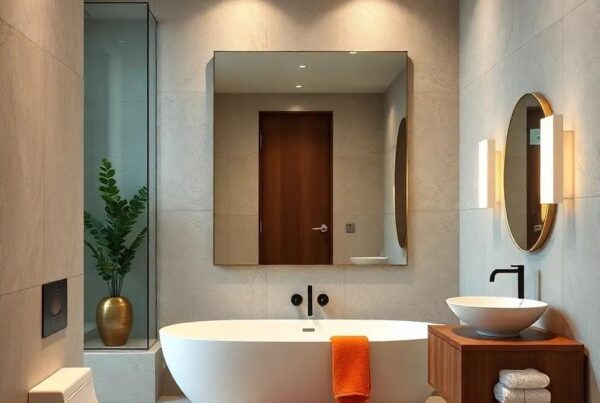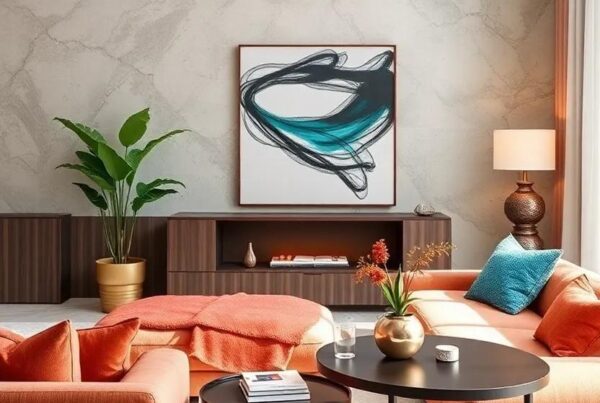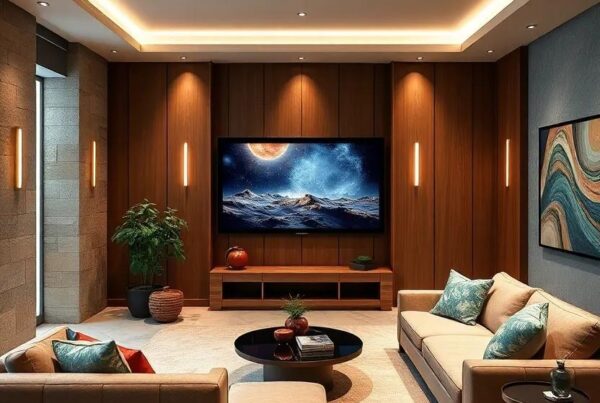In the realm of interior design, few styles evoke the same sense of glamour and sophistication as Art Deco. Emerging in the early 20th century, this movement celebrated the fusion of artistry and industrial innovation, leaving an indelible mark on architecture, fashion, and home decor. Among the most enchanting expressions of this aesthetic are luxury lighting fixtures that shimmer with the promise of elegance. In “,” we embark on a journey through time and design, unraveling the intricate craftsmanship, bold geometric shapes, and opulent materials that define these iconic pieces. Join us as we explore how Art Deco lighting not only illuminates spaces but also transforms them, casting a warm glow on the beauty of a bygone era while seamlessly integrating into contemporary settings.
Illuminate Your Space with Art Deco’s Iconic Geometric Patterns
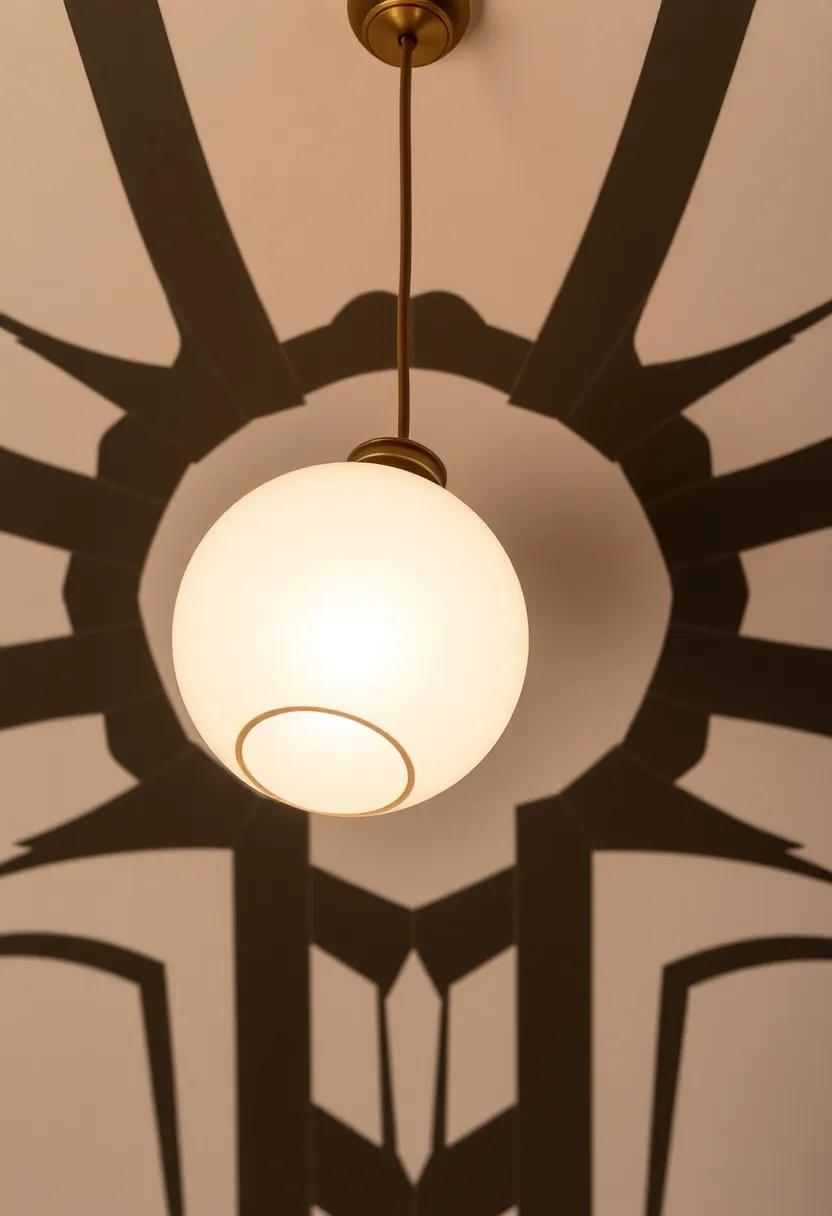
Art Deco, a design movement that emerged in the early 20th century, captures the essence of luxury and sophistication with its striking geometric patterns. These motifs lend a sense of rhythm and dynamism to any space, making them a compelling choice for lighting fixtures that both illuminate and enhance your environment. Bold lines, angular shapes, and rich materials come together in an exquisite dance, producing luminaries that are as functional as they are stunning.With options ranging from intricate, multi-faceted glass designs to sleek metal forms, the versatility of Art Deco allows it to seamlessly integrate into both contemporary and classic interiors.
Choosing the right lighting fixture can transform your living area into a sanctuary of style. Consider these key elements when selecting your art deco lighting:
- Color Palette: Emphasize warm metals like gold and brass contrasted with deep jewel tones.
- Materials: Look for glass, chrome, and marble to evoke the era’s lavishness.
- Scale: Think about statement pieces that draw the eye and create visual impact.
When tailored with these attributes, your Art Deco lighting fixtures will not just illuminate but also sculpt your space, casting vibrant patterns across walls and ceilings, creating a tapestry of light that is both mesmerizing and memorable.
The Timeless Charm of Art Deco’s Luxurious Materials and Finishes
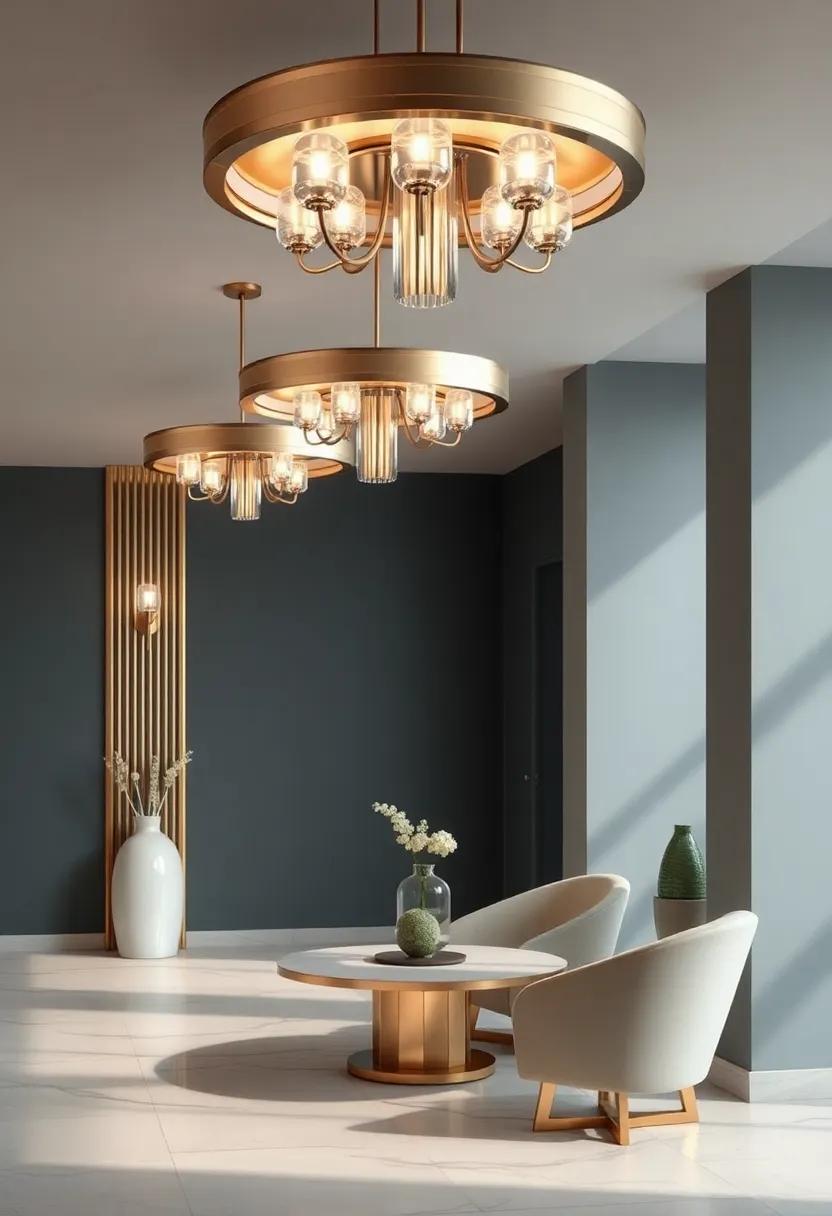
Art Deco, an iconic design movement of the early 20th century, is celebrated for its bold geometry and lavish materials that exude sophistication and luxury. When it comes to lighting fixtures, the auditory whisper of elegance can often be found in the rich textures and exquisite finishes that characterize this style. The integration of materials such as polished metals, crystal glass, and exotic woods not only elevates the aesthetic but also creates a sensory experience that beckons admiration. These luxurious materials, combined with geometric forms and intricate detailing, create stunning focal points that can transform any space into a realm of indulgence.
consider the brilliance of statement chandeliers, adorned with faceted crystals that catch and refract light, casting playful patterns across walls and ceilings. Each fixture frequently enough incorporates elements like chrome accents and marble bases, contributing to a harmonious balance of glamour and elegance. To better understand how these elements come together, the table below highlights some popular materials and their captivating features:
| Material | Features |
|---|---|
| Crystal | Reflects and refracts light; adds brilliance |
| Brass | Warm tone; durable; classic appeal |
| Marble | Luxurious feel; unique patterns; weighty presence |
| Glass | Variety of colors; delicate yet sturdy; enhances light |
Exploring the Influence of Art Deco on Modern Lighting Design

Art Deco emerged in the early 20th century, captivating the world with its bold geometry and opulent style. This artistic movement has left an indelible mark on various design realms, particularly in lighting. Modern lighting design has embraced the essence of Art Deco, resulting in fixtures that are not just functional but also masterpieces that narrate a story of elegance and sophistication. Key features influencing today’s lighting include:
- Geometric Shapes: Clean lines and symmetrical patterns are prevalent in modern designs, echoing the architectural motifs of the Art Deco era.
- Luxurious Materials: The use of brass, crystal, and glass brings a sense of grandeur, reminiscent of the richness found in classic Art deco pieces.
- Bold Colors: Incorporating rich hues and striking contrasts enables modern lighting to stand out while still paying homage to the past.
The interplay of vintage charm and contemporary functionality has led to a resurgence in the popularity of Art Deco-inspired lighting. Designers today often draw inspiration from classic details, reinterpreting them through innovative technology and enduring practices. This synthesis of old and new not only enhances interior spaces but also promotes a unique atmosphere that captivates the senses. As we explore the impact of this design philosophy, we find a engaging blend where:
| Design Element | Art Deco Influence | Modern Adaptation |
|---|---|---|
| Form | Ornate and Geometric | Minimalist yet striking |
| Material | Brass and Crystal | Sustainable alternatives |
| color Palette | Rich and Bold | Nature-inspired tones |
A Journey through the Elegance of Art Deco Chandeliers

The Art Deco movement, flourishing between the 1920s and 1940s, celebrated the fusion of luxury and modernity, and nowhere is this more evident than in its stunning chandeliers. These splendid lighting fixtures encapsulate the essence of elegance, characterized by their geometric shapes, rich materials, and intricate details. Crafted from brass, crystal, and glass, Art deco chandeliers are known for their bold lines and opulent finishes, often featuring colors that resonate with the era’s vibrant aesthetic. Key elements that set these pieces apart include:
- Symmetry: A hallmark of Art Deco, achieving balance through design.
- materials: Luxurious use of metals and glass that reflect light beautifully.
- Futuristic Patterns: Incorporating motifs inspired by technology and nature.
When contemplating an Art Deco chandelier for your space, it’s essential to consider its historical significance and aesthetic appeal. these fixtures not only serve as a source of illumination but also as captivating focal points that can transform any room. Imagine a chandelier featuring streamlined curves alongside flamboyant designs, creating a striking visual contrast that draws the eye. Below is a glimpse into the characteristics of some iconic designs from the era:
| Chandelier Style | Material | Distinctive Feature |
|---|---|---|
| Skyscraper | Chrome and Glass | Layered geometric forms |
| Streaming Lines | Cristal and Bronze | Sweeping curves resembling motion |
| Floral Motifs | Glass and Metal | Nature-inspired intricate detailing |
The Role of Lighting in Setting the Mood of an Art Deco Space
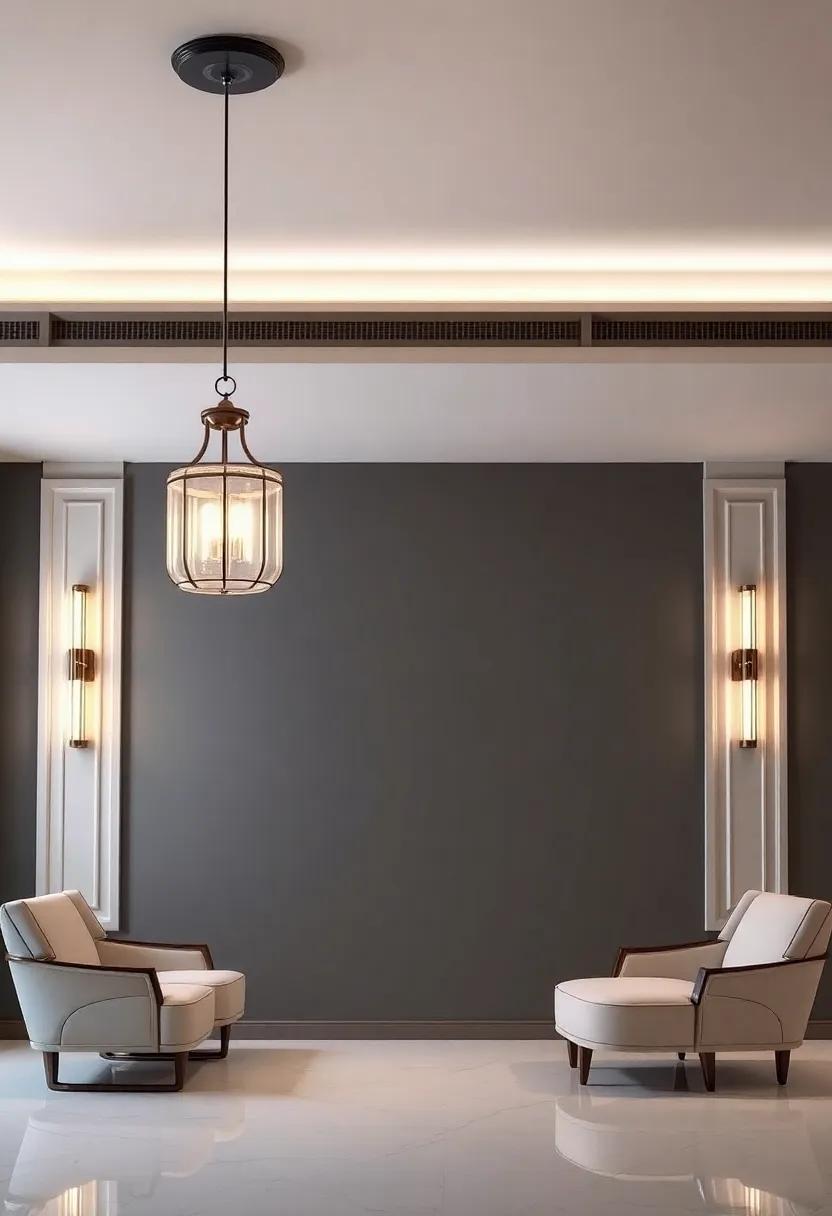
Lighting acts as the silent yet powerful conductor of ambiance within an Art Deco space,harmonizing its luxurious elements with a captivating brilliance. The geometric patterns and sleek lines characteristic of this style come alive under carefully chosen lighting designs, allowing shadows and reflections to dance across surfaces. A well-lit room, preferably accented with Art Deco chandeliers, floor lamps, and sconces, encourages an atmosphere of opulence. These fixtures not only illuminate but also serve as statement pieces, drawing the eye and sparking conversation.
To achieve varying moods in an Art Deco environment, different types of lighting should be employed:
- Soft Ambient Lights: Essential for general illumination, soft lights create a warm and inviting feel.
- Statement Fixtures: Eye-catching chandeliers or bold pendant lights act as focal points that capture the essence of Art Deco.
- Task Lighting: Strategically placed lights provide functional illumination without detracting from the aesthetic appeal.
By adjusting the brightness and positioning of these fixtures, the mood can shift seamlessly from vibrant and energizing to calm and introspective, making lighting a crucial element in enriching the experience of any Art Deco setting.
Layering Light: Creating Depth with Art Deco Inspired Fixtures
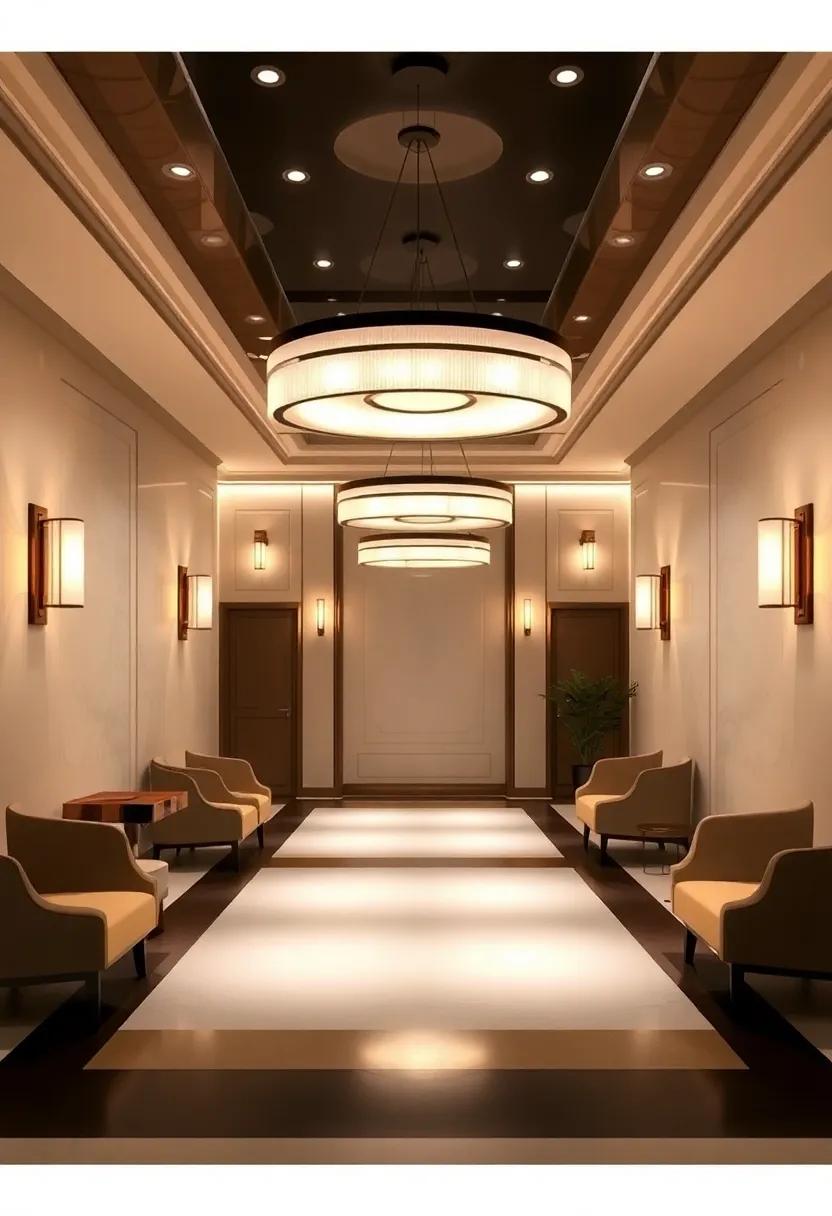
Art Deco lighting fixtures are more than just sources of illumination; they are the silent narrators of elegance in modern interiors. By layering different light sources, you create a harmonious interplay that enhances architectural features and transforms spaces. Think about employing a combination of ambient, task, and accent lighting to achieve a rich, dynamic aesthetic.Consider these fixture types:
- Chandeliers: Add a focal point with oversized, geometric designs.
- Sconces: Utilize wall-mounted fixtures to accentuate height and depth.
- <strong.Table Lamps: Incorporate vintage-inspired pieces to bring warmth to curated spaces.
The beauty of layering light lies in the emotional response it evokes. By strategically placing fixtures at varying heights and distances, you can create an illusion of depth that draws the eye throughout the room. Below is a simple guide to the ideal layering techniques:
| Layer | Purpose | Example Fixtures |
|---|---|---|
| Ambient | General illumination,sets the mood | Flush mounts,large chandeliers |
| Task | Focused light for specific activities | Desk lamps,pendant lights |
| Accent | Highlight features or artwork | Spotlights,decorative wall sconces |
Capturing Glamour: The Use of Crystal in Art Deco Lighting

Crystal, with its captivating brilliance and reflective qualities, became an emblem of sophistication during the Art Deco era, transforming ordinary lighting into exceptional statements of elegance.This dramatic aesthetic relied on geometric shapes and bold lines, where crystal chandeliers and sconces emerged as symbols of luxury and style. The interplay between light and crystal creates an enchanting atmosphere, casting intricate shadows and highlighting the meticulously crafted details, thus adding depth and character to any space.
In the realm of Art Deco design, the use of crystal is not limited to mere decoration but serves as a functional art form. Each piece is meticulously designed, frequently enough featuring:
- Artistic Glass Cutting: Expertly crafted facets that catch and refract light.
- Iconic Geometric Forms: Shapes that exemplify the era’s fascination with symmetry and structure.
- Lush Finishes: Polished surfaces that enhance luminosity and amplify elegance.
This harmonious blend of functionality and artistry ensures that crystal lighting fixtures become focal points that embody the allure of an era defined by opulence and meticulous craftsmanship.
Color Palettes That Complement Art Deco Lighting Fixtures

To truly embrace the allure of luxury Art Deco lighting fixtures, selecting the right color palette is essential. These striking designs often reflect the elegance and glamour of the 1920s and 1930s,and pairing them with thoughtful colors can elevate the ambiance of any space. Consider incorporating the following hues to create a sophisticated environment:
- Emerald Green: A rich, jewel-toned green that embodies opulence.
- Deep Sapphire Blue: Adds a touch of nighttime elegance reminiscent of the starry sky.
- Gold Accents: enhances the luxury feel with a warm and inviting shine.
- Soft Ivory: A neutral base that helps highlight the boldness of the fixtures.
- Burnt Orange: Infuses a vintage vibe while creating warmth in the decor.
Combining these colors can yield stunning results that not only showcase the lighting but also complement the overall decor. For instance, pairing emerald green walls with gold accents on the fixtures amplifies the Deco aesthetic, while soft ivory furniture serves as an elegant contrast.Experimenting with different textures in these colors, such as luxurious velvet or polished metals, can further enhance the visual appeal. Here’s a simple guide to help you envision effective combinations:
| color | Best Pairing |
|---|---|
| Emerald Green | Gold |
| Deep Sapphire Blue | Silver |
| Burnt Orange | Cream |
Innovative Designs: How Art Deco Lighting Redefined Elegance
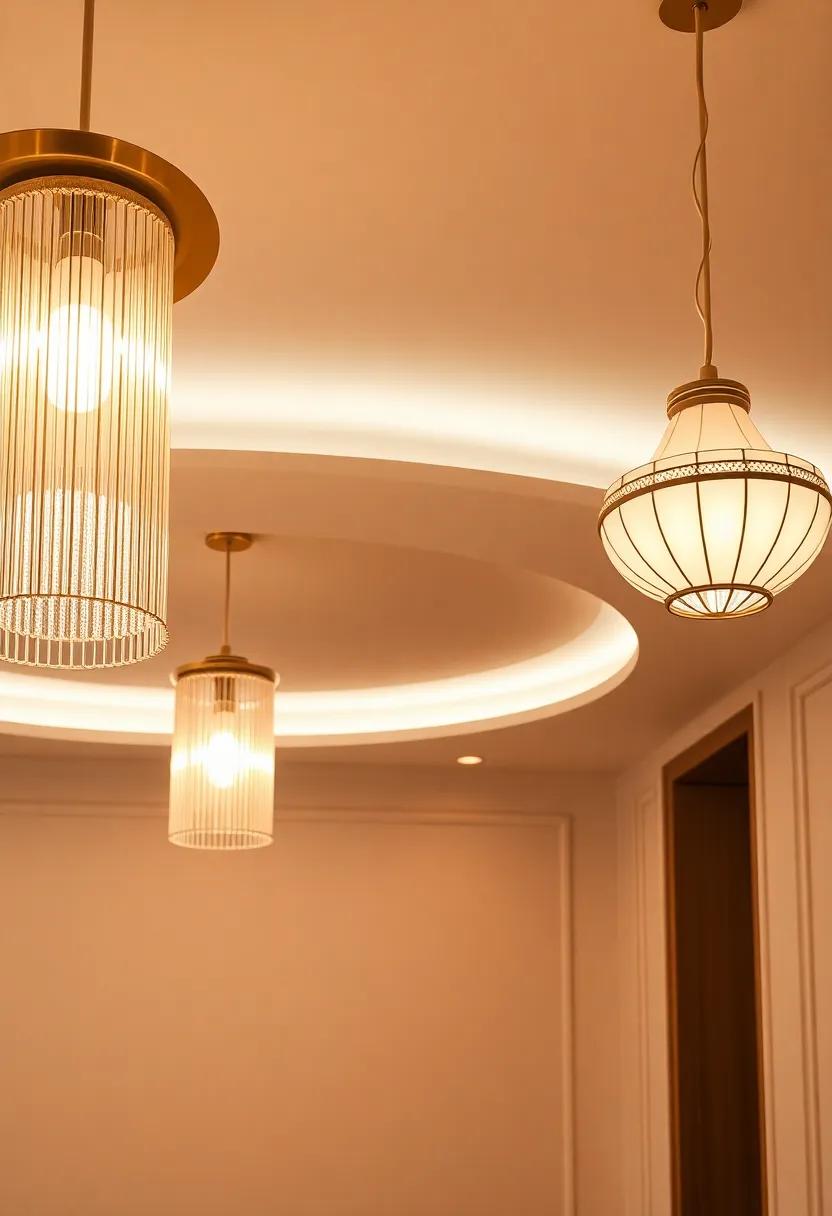
Art Deco lighting emerged in the 1920s as a transformative style that melded function with a striking aesthetic. Characterized by its bold geometric shapes and luxurious materials,this design movement redefined how light and space interacted,infusing elegance into both public and private domains.Typical features of Art Deco lighting include:
- Streamlined forms: Clean lines and symmetrical designs evoke a sense of harmony.
- Rich Materials: Glass, chrome, and polished metals combine to create visually stunning pieces.
- Ornate Detailing: Intricate patterns and motifs reflect sophistication and artistry.
This era’s lighting fixtures are not merely sources of illumination but objects of art that draw the eye and enhance their surroundings. From opulent chandeliers that grace grand ballrooms to understated sconces that complement intimate settings, these pieces convey a sense of luxury that resonates with contemporary tastes. A comparison of various styles reveals distinct characteristics:
| Feature | Art Deco | Customary |
|---|---|---|
| Design Elements | Geometric, stylized | Intricate, ornate |
| Materials | Chrome, glass | Wood, wrought iron |
| Color palette | Bold, contrasting | Soft, muted |
Contrasting Styles: Merging Contemporary with Art Deco Lighting

The juxtaposition of modern minimalism with the elaborate details of Art Deco lighting creates a unique aesthetic that resonates with both history and modernity. Contemporary designs are often characterized by clean lines and a subdued color palette, while Art Deco embraces opulence, featuring bold geometric shapes and luxurious materials. This blend can manifest in various ways, such as using streamlined fixtures adorned with intricate details or selecting a lavish chandelier that hangs prominently in a minimalist dining room.
To achieve a accomplished melding of these two styles, consider the following elements:
- Color Palette: Use a neutral base with splashes of rich colors commonly found in Art Deco, like deep blues or golds.
- Materials: Combine sleek metal finishes with ornate glass shades to capture both eras’ essence.
- Placement: Position bold Art Deco fixtures as statement pieces against a contemporary backdrop to highlight their grandeur.
| Style | Characteristics |
|---|---|
| Contemporary | Minimalistic, functional, simple lines, muted colors. |
| Art Deco | Ornate, bold colors, geometric shapes, luxurious materials. |
Celebrating Iconic Art Deco Lighting Designers and Their creations

The Art Deco movement, which flourished in the 1920s and 1930s, is renowned for its lavish aesthetics and luxurious designs. Among the most celebrated aspects of this style are the lighting fixtures that beautifully encapsulate the era’s opulence. Renowned designers such as Serge Roche, Clarice Cliff, and René Lalique pushed the boundaries of creativity, crafting pieces that transformed everyday illumination into captivating works of art. Their use of materials like glass, chrome, and exotic woods created stunning contrasts, while geometric shapes and bold colors reflected the vibrancy of the time.
Key elements of Art Deco lighting include:
- Symmetry: A hallmark of the style, with designs frequently enough featuring balanced compositions.
- Streamlined forms: Influenced by the rise of modern technology, encouraging sleek outlines.
- Luxurious materials: Incorporating crystal, brass, and vibrant glass to elevate elegance.
- bold motifs: drawing from nature and history, integrating intricate patterns and motifs in metalwork.
To appreciate the profound impact of these creators, consider the following iconic pieces:
| Designer | Creator | Notable Piece |
|---|---|---|
| Serge Roche | French Designer | Chrome Arc Floor Lamp |
| Clarice Cliff | English Pottery Artist | Mandalay Table lamp |
| René Lalique | French Glass Designer | Vase Lamp |
Art Deco Lighting Fixtures: Highlights of Historical Significance
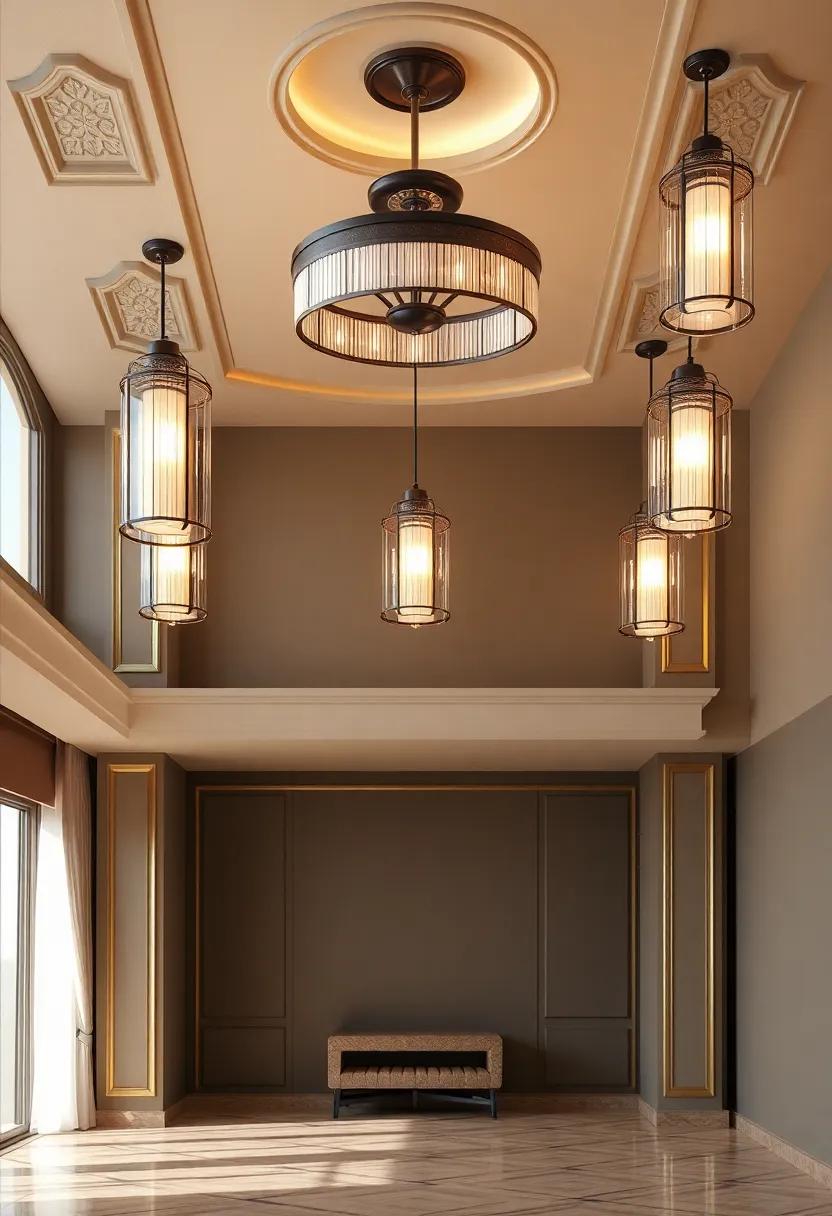
Art deco lighting fixtures epitomize an era that celebrated both luxury and modernity, making them not just sources of illumination but also stunning works of art. Emerging in the early 20th century, this design movement thrived in the 1920s and 30s, reflecting a response to the avant-garde artistic movements preceding it, such as Cubism and Futurism. Characterized by geometric shapes, bold colors, and ornate details, these fixtures often incorporate materials like polished metals, crystal, and glass. Key elements of this style include:
- Geometric patterns: Angular designs that evoke a sense of movement.
- Rich materials: The use of brass, chrome, and exotic woods.
- Innovative technologies: Advances in electrical engineering that permitted new lighting effects.
These lighting designs drew influence from various cultures, including Egyptian, Aztec, and even Japanese aesthetics, leading to unique hybrids that reflect a globalized world. the significance of Art Deco lighting fixtures can be summarized in their role within the grand architectural narratives of the period, contributing to iconic structures such as the Empire State Building and the Palais de Chaillot. below is a simple comparison table highlighting some of the most notable features and examples of Art Deco lighting fixtures:
| Fixture Type | Material Used | Notable Example |
|---|---|---|
| Pendants | Glass and Chrome | Chrysler Building |
| Sconces | Brass and Crystal | Radio City Music Hall |
| Table Lamps | Marble and Bakelite | Émile-Jacques Ruhlmann’s Designs |
Using Pendant Lights to Achieve Art Deco Sophistication
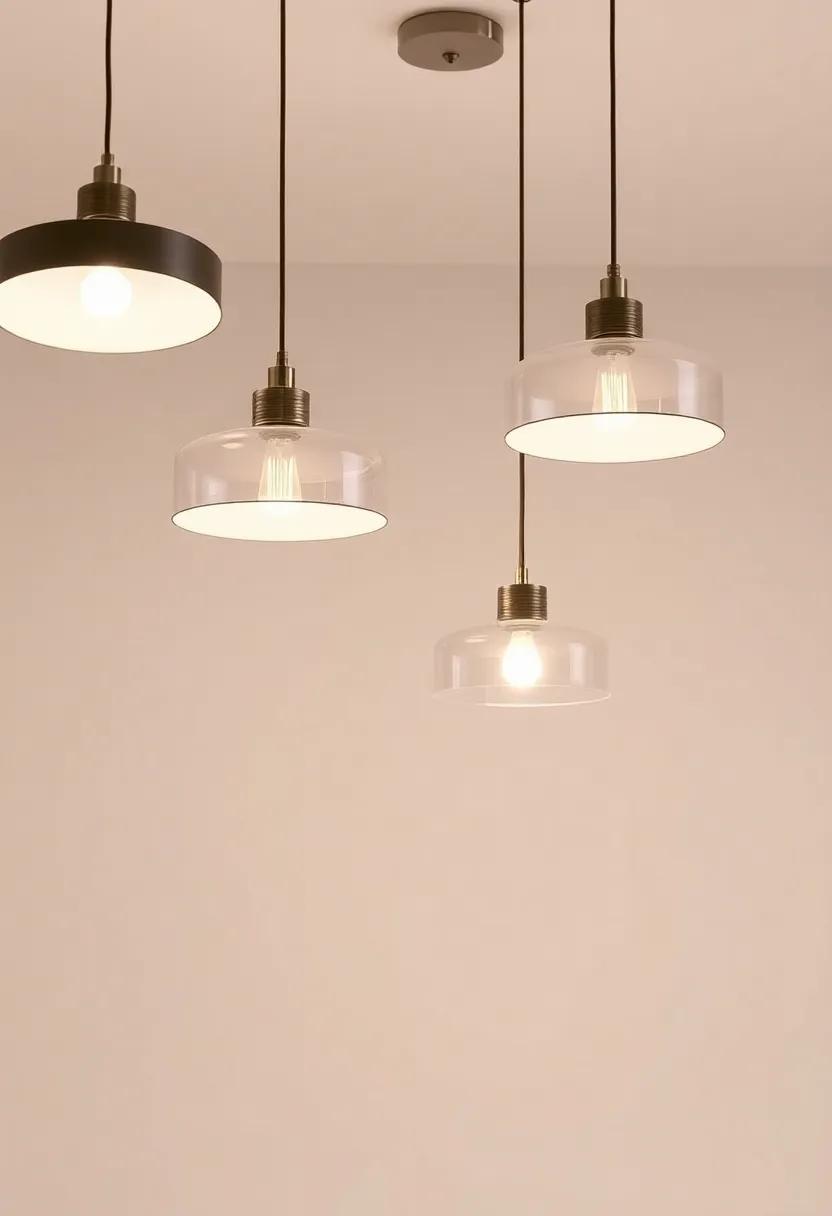
Pendant lights have an undeniable charm, seamlessly blending function and form to elevate any space into a realm of classiness. When it comes to Art Deco, these lighting fixtures become exceptionally captivating through their bold geometric shapes, luxurious materials, and vibrant colors. Opting for a pendant light adorned with elements such as chrome finishes, etched glass, or crystal embellishments can imbue your home with the sophistication reminiscent of the roaring Twenties. Consider the following styles that encapsulate the essence of Art Deco:
- Geometric Patterns: Pendant lights featuring zigzag or chevron designs evoke the iconic motifs of the era.
- Bold Colors: Rich jewel tones like emerald green and royal blue can add a striking focal point.
- layered Elements: Multi-tiered designs create depth and intrigue, perfect for grand dining spaces.
Incorporating these luxurious pieces into your décor not only illuminates your home but also serves as a conversation starter. The interplay between light and shadow created by intricately designed pendant lights adds a dramatic flair, enhancing both intimate and expansive areas. Moreover, placing a pendant light in key locations, such as over a dining table or kitchen island, can anchor the space while embracing the elegance typical of Art Deco styling. Explore quality materials such as polished brass or marble accents to mimic the opulence of the period:
| Material | Effect |
|---|---|
| Polished Brass | Radiates warmth and sophistication. |
| Etched Glass | Offers a soft glow and intricate visual detail. |
| Crystal | Creates stunning reflections and elevates luxury. |
Wall Sconces that embody the Allure of Art Deco Style
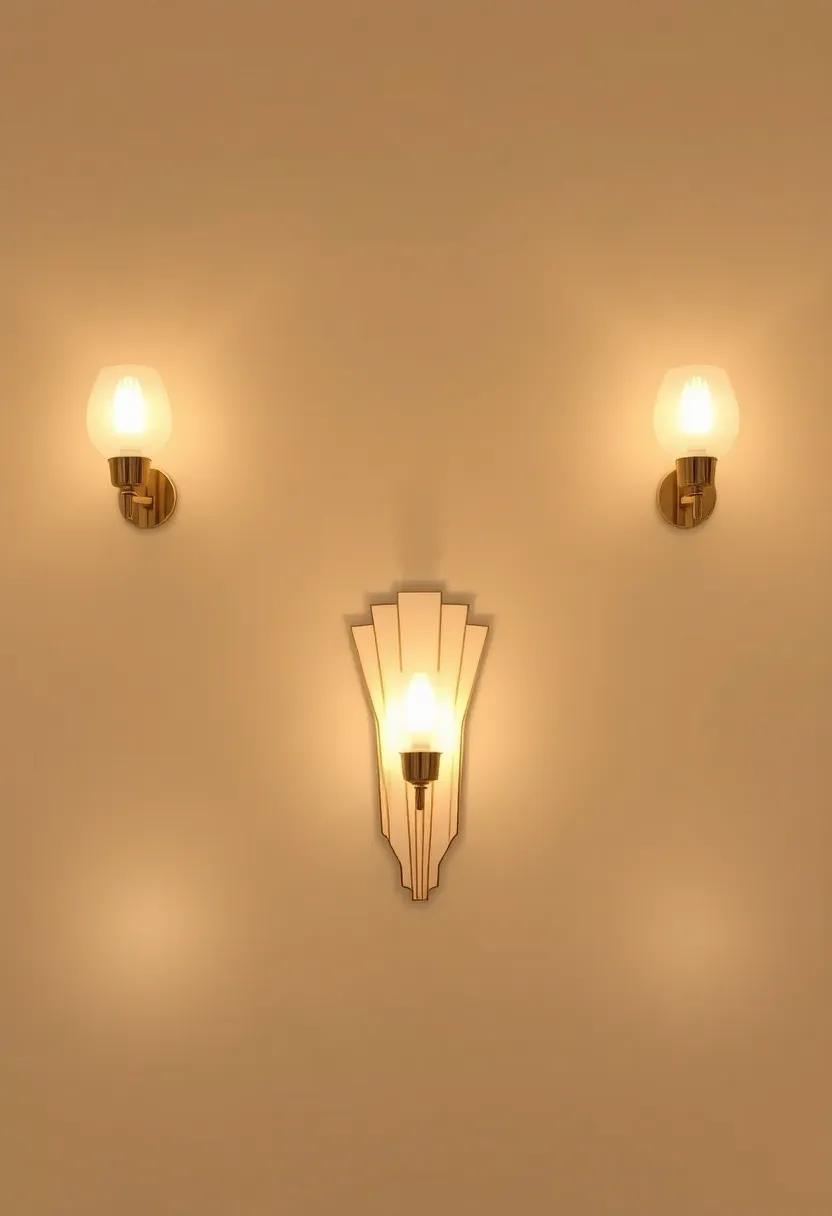
Wall sconces designed in the luxurious Art Deco style embody a unique blend of glamour and sophistication, serving as both functional lighting and exquisite decor. Characterized by geometric patterns, rich materials, and metallic finishes, these fixtures transform the ambiance of any space. With their striking silhouettes and intricate details, they effortlessly create a sense of opulence. Consider the following features that make Art Deco sconces truly stand out:
- Bold Geometric Shapes: Clean lines and angular designs evoke a sense of modernity.
- Opulent Materials: Frequently crafted from brass, crystal, and glass, embracing lavish textures.
- Rich Color Palettes: Deep hues combined with gold or silver accents enhance their visual impact.
The versatility of these wall sconces allows them to complement various interior styles, from classic to contemporary. Placed in pairs flanking a mirror or artwork, or used as standalone pieces on a feature wall, they lend an air of elegance to the surroundings. here’s a brief look at different types of Art Deco sconces:
| Type | Description |
|---|---|
| Flush Mount | Mounted directly on the wall, ideal for low ceilings. |
| Arm Sconces | Features extended arms that allow for adjustable light direction. |
| Backlit | Glows softly from behind, creating a halo effect. |
Sculptural Floor Lamps as Statements in Art Deco Home Decor
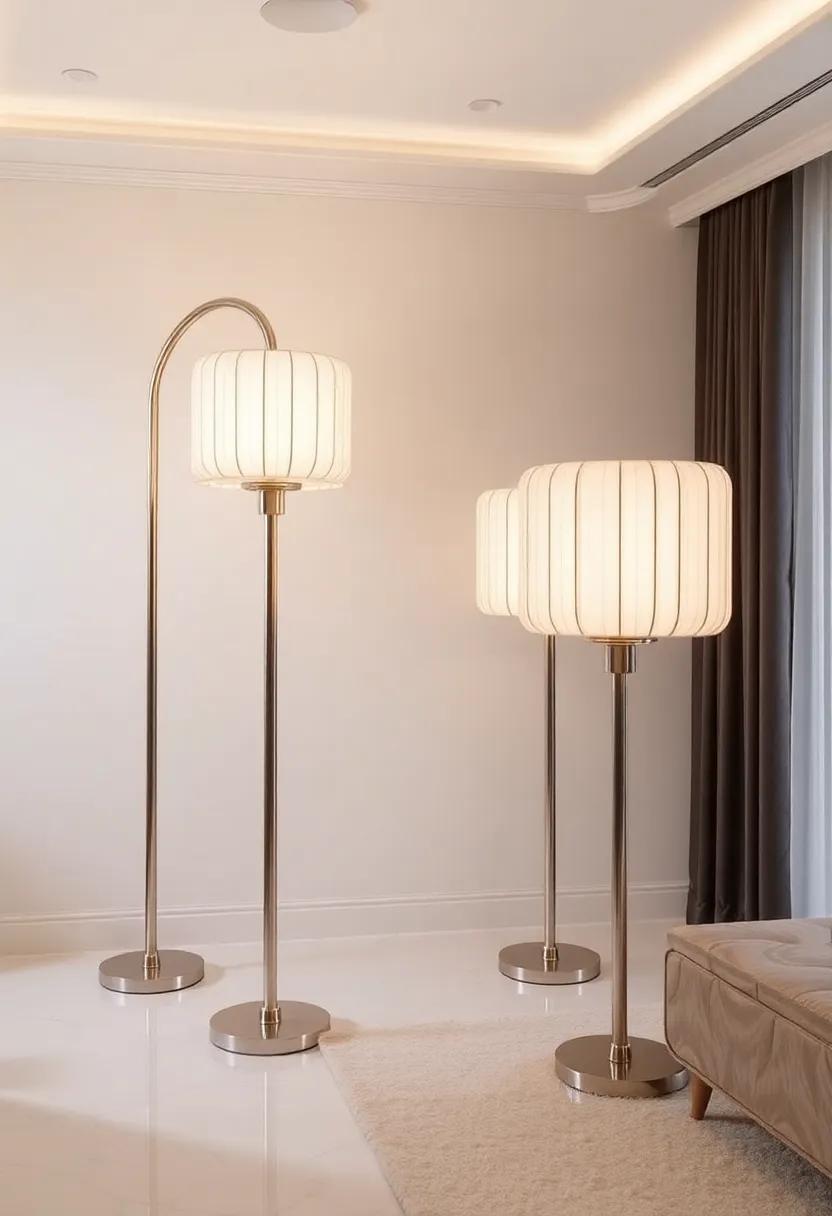
In the realm of Art Deco home decor, sculptural floor lamps transcend mere functionality, emerging as captivating focal points that infuse a space with personality and elegance.These remarkable pieces frequently enough boast a harmonious blend of geometric forms, rich materials, and vivid colors, creating a stunning visual impact that defines the Art Deco aesthetic. With their intricate designs and luxurious finishes, sculptural floor lamps serve not only as sources of light but also as expressions of style, echoing the exuberance of the 1920s and 1930s. The artistry involved in their creation invites admiration,drawing the eye in and encouraging contemplation of their unique forms.
Choosing a sculptural floor lamp can dramatically alter the ambiance of a room, whether it is positioned in a cozy reading corner or as a statement piece in a grand living area. Consider the following tips when selecting the perfect lamp to complement your Art Deco theme:
- Material Matters: Look for lamps made from metals like brass, chrome, or polished nickel, frequently enough combined with glass or acrylic.
- Shape and Structure: Opt for angular designs or sweeping curves that mirror the style’s architectural influences.
- Color Palette: Embrace bold colors such as deep blues, rich greens, or warm golds that resonate with the Art Deco color schemes.
Here’s a swift overview of key characteristics to look for when selecting a sculptural floor lamp:
| Feature | Description |
|---|---|
| Base Design | Sturdy and artistic, frequently enough featuring elaborate bases or pedestals. |
| Shade Style | Translucent or opaque, with patterns that reflect the era’s motifs. |
| Height and Scale | Varied sizes to suit both spacious and compact interiors. |
The Magnificence of Art Deco lighting in Public Spaces
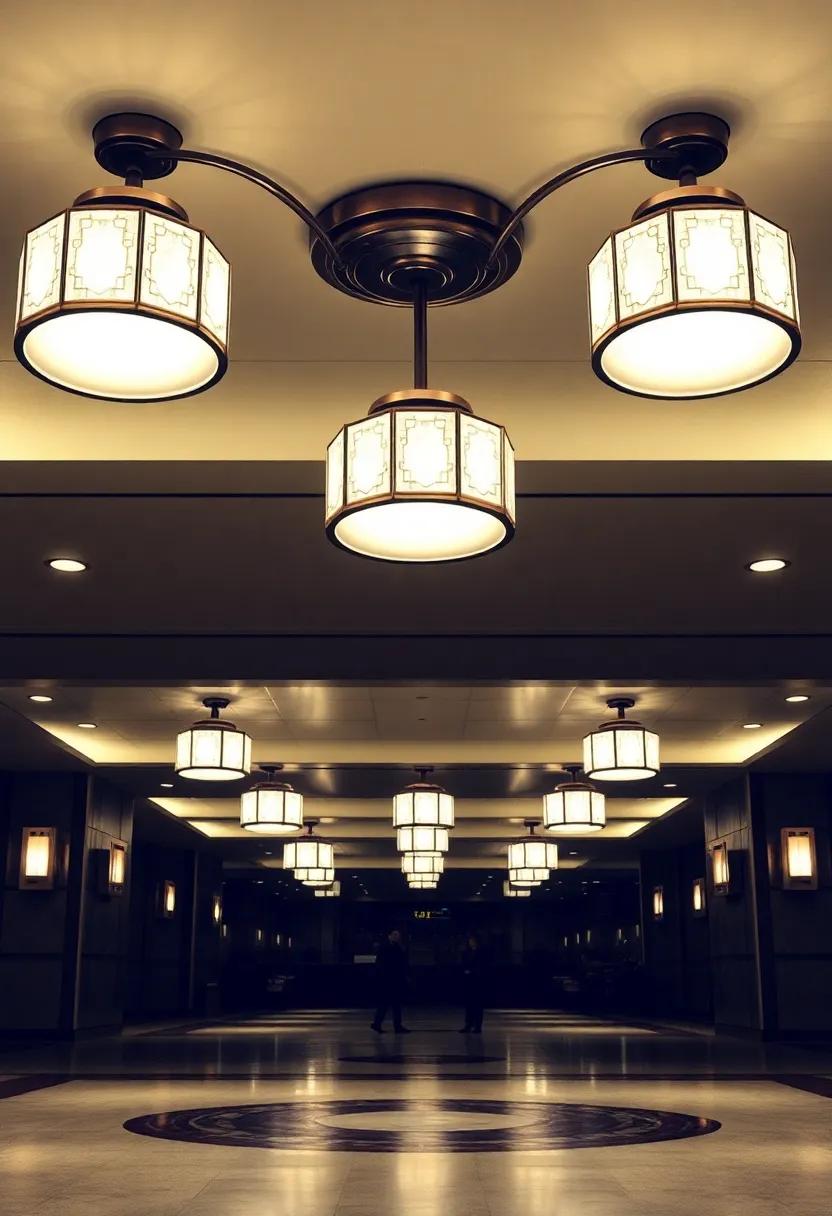
The Art Deco movement, thriving in the early 20th century, revolutionized the aesthetics of public spaces with its bold geometry and luxurious materials. in this era, lighting fixtures became not just sources of illumination but also stunning centerpieces that contribute substantially to the ambiance of grand entrances, bustling lobbies, and elegant theaters. The interplay of light and shadow through intricately designed glass and metallic elements creates an enchanting atmosphere that captivates visitors and enhances their overall experience. The careful attention to detail in these fixtures often incorporates motifs inspired by nature, geometry, and technology, emphasizing both texture and form.
Many public spaces have embraced Art deco lighting, recognizing its unmatched ability to foster a sense of grandeur and sophistication.These fixtures frequently enough include a range of design features that reflect the opulence of the period, such as:
- chic Geometric Patterns: Symmetrical shapes that draw the eye and evoke a sense of rhythm.
- Luxurious materials: Use of polished metals, etched glass, and rich colors that catch the light beautifully.
- Architectural Integration: Lighting that complements the structural elements of the buildings, enhancing their stature and beauty.
This harmonious blend of art and utility not only beautifies public environments but also invites people to linger, explore, and appreciate the elegance encapsulated within these magnificent works. Here’s a brief overview of some classic Art Deco lighting styles commonly found in public spaces:
| Style | Description |
|---|---|
| Skyscraper | Tall, elongated designs that echo the rise of modern architecture. |
| Fixture Sconces | Wall-mounted lights that provide both style and functionality. |
| Chandeliers | Opulent centerpieces that dominate a room with their dramatic presence. |
Reviving Vintage Finds: Antique Art Deco Fixtures in Modern Interiors

The resurgence of vintage aesthetics in contemporary design has opened a treasure trove of possibilities for those looking to infuse their spaces with character and charm. Art Deco lighting fixtures stand out as iconic pieces that effortlessly blend elegant lines, geometric patterns, and luxurious materials. By integrating these remarkable finds into modern interiors, enthusiasts can create a striking juxtaposition that highlights both the past and present. Think of a stunning chandelier with intricate chrome detailing that serves as the focal point of a minimalist living room,or wall sconces adorned with rich colors that add warmth and sophistication to a sleek hallway.
When revamping your space, consider the following ways to incorporate antique Art Deco lighting:
- mix with contemporary furnishings for a playful contrast.
- Create a statement piece in an otherwise neutral room.
- Pair with modern art to enhance visual interest.
| Fixture Type | Material | Ideal Setting |
|---|---|---|
| Chandelier | Crystal | Dining Room |
| Table Lamp | Brass | Living Room |
| Wall Sconce | Glass & Metal | Hallway |
Each piece found contributes to a narrative of sophistication and elegance that speaks volumes about its historical context. The play of light through angular glass and polished metals not only illuminates spaces but also evokes a sense of nostalgia for the glamour of a bygone era. By thoughtfully curating these exquisite fixtures, homeowners can create an ambiance that celebrates both luxury and history, making any space not just a room, but a timeless experience.
The Future of Art Deco Lighting: Trends to watch for in design
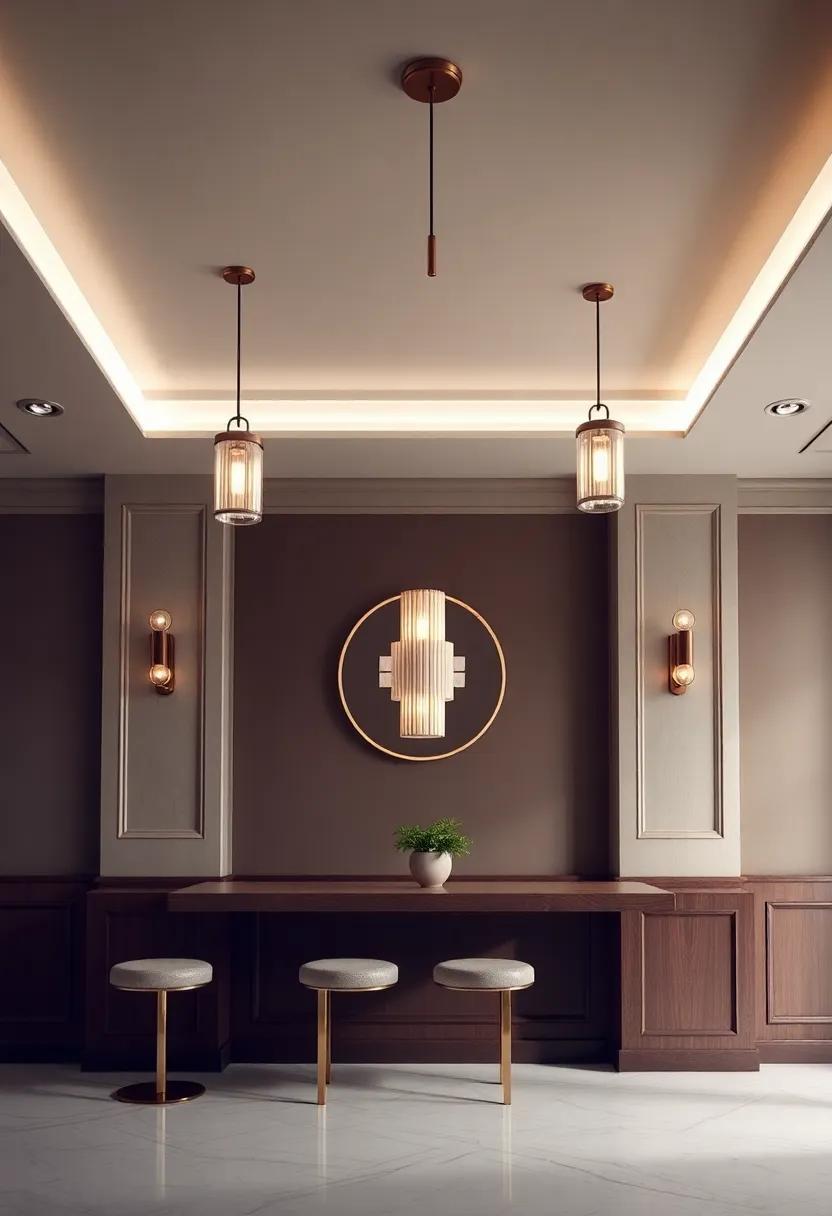
The revival of Art Deco lighting is marked by a blend of nostalgia and contemporary innovation, breathing new life into this timeless aesthetic. As we move forward, expect to see a confluence of traditional elegance and modern functionality, with designers embracing materials that echo the glamour of the 1920s and 1930s. Key trends include:
- Bold Geometric Patterns: lighting fixtures adorned with intricate designs and angles, capturing the essence of Art Deco.
- Mixed Materials: Combining glass, metal, and stone to create unique textures and finishes, enhancing visual interest.
- Smart Technology: The integration of smart home features seamlessly into Art Deco designs, marrying luxury with convenience.
Additionally, the use of sustainable materials and artisanal craftsmanship represents a growing respect for the environment while honoring the rich legacy of this iconic style. The resurgence of layered lighting design approaches will also take center stage, allowing for dynamic visual narratives within spaces. Noteworthy color palettes for upcoming Art Deco lighting include:
| Color Palette | Description |
|---|---|
| Deep Jewel tones | Rich emeralds, sapphires, and amethysts add opulence. |
| Soft Metallics | Subtle gold, bronze, and silver accents for sophistication. |
| monochromatic Schemes | Bold blacks and whites paired for dramatic contrast. |
Art Deco Lighting: An Investment in timeless Aesthetics
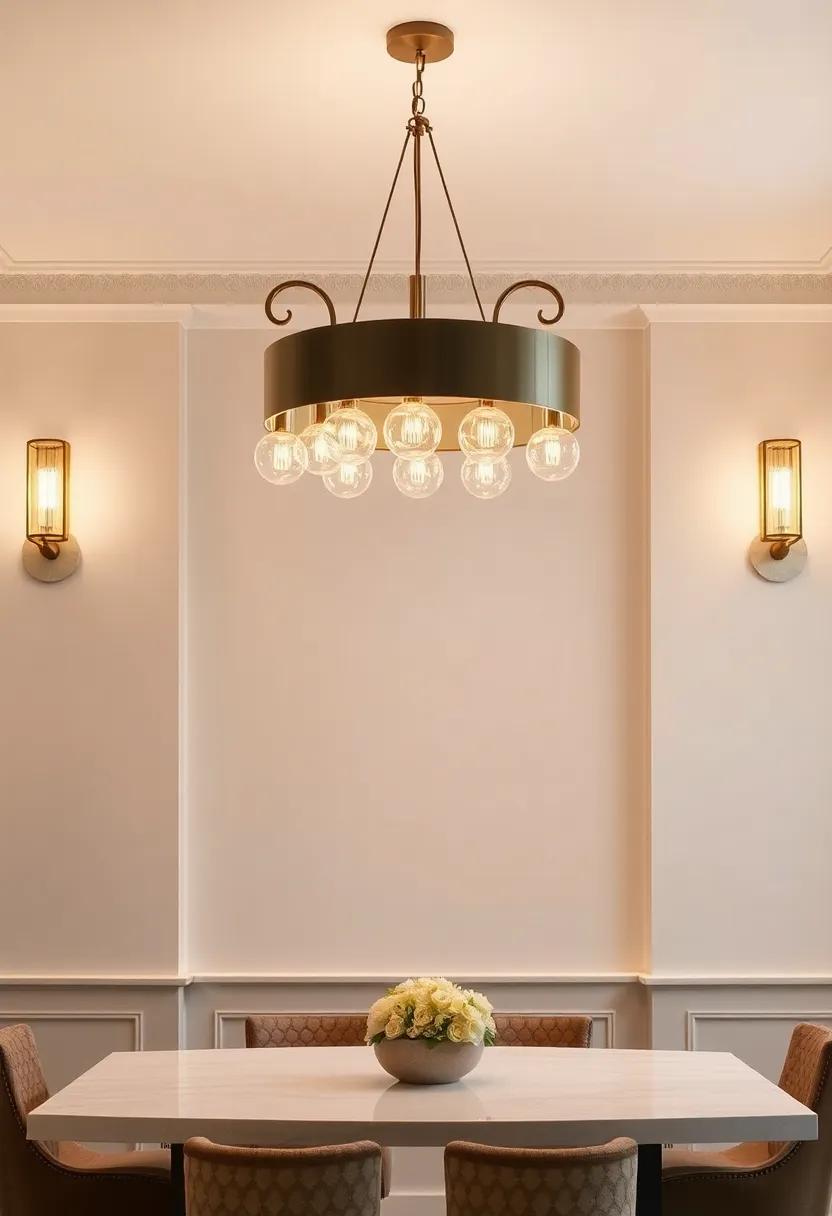
Investing in luxury Art Deco lighting fixtures is more than just enhancing the illumination of your space—it’s about embracing a distinct style that embodies the elegance of a bygone era. These fixtures are characterized by their bold geometric shapes, rich materials, and dynamic lines, which together create a stunning visual impact. By integrating Art Deco lighting into your home, you not only elevate the ambiance but also weave a narrative of sophistication and refinement. With their ability to complement various decor styles,these exquisite pieces serve as both functional and artistic elements in any room.
When considering Art Deco lighting as an investment, it’s essential to focus on certain attributes that ensure both quality and aesthetic appeal. Key features to look for include:
- Materials: Look for fixtures crafted from brass, chrome, or glass, which add a touch of opulence.
- Craftsmanship: Prioritize well-crafted pieces that showcase intricate detailing and timeless designs.
- Condition: Vintage and antique fixtures can significantly increase in value if maintained properly.
To guide you on the types of Art Deco lighting fixtures available, consider the following table:
| Fixture Type | Key Features | Ideal Placement |
|---|---|---|
| Pendant Lights | Suspended, often geometric designs | Dining rooms, entryways |
| Wall Sconces | Elegant wall-mounted pieces | Hallways, living rooms |
| Table Lamps | Decorative bases with intricate shades | Bedrooms, study areas |
Future Outlook
As we draw the curtains on our exploration of luxury Art Deco lighting fixtures, it is clear that these exquisite pieces are not merely sources of illumination; they are embodiments of a bygone era, where glamour and sophistication danced in harmony. The allure of Art Deco transcends time, inviting us to infuse our modern spaces with the elegance of the past.Whether casting a soft glow in a chic dining room or serving as a striking focal point in a contemporary setting,these fixtures tell a story of artistry,innovation,and a dedication to beauty.
In a world where the ordinary frequently enough reigns, integrating these stunning designs into our homes provides a touch of the extraordinary. As you reflect on your own space, consider the transformative power of light and design. Allow the spirit of Art Deco to inspire not just your decor, but also your perception of luxury itself—one that prioritizes style, craftsmanship, and a timeless elegance that will always shine through.
Illuminate your surroundings, and let the allure of Art Deco lighting guide you into a future where elegance is celebrated and cherished. After all, in the realm of design, true luxury is about creating a narrative that resonates with both the heart and the eye.Thank you for embarking on this journey with us; may your spaces be forever illuminated in exquisite style.
As an Amazon Associate I earn from qualifying purchases.

